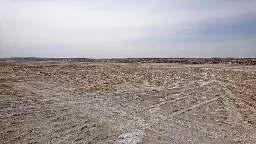Second dust conference in the Earth's desert belt
Second dust conference in the Earth's desert belt
The arid regions in the desert belt of the northern hemisphere extend from the Sahara in western Africa to the Middle East and the deserts of China. Millions of people in these regions suffer from the effects of dust on their health, flora, economy and climate.
In total, dust particles with a mass of around 1500 megatons are released into the atmosphere every year. The Sahara is thought to be the main source with around 1000 megatons.
Mineral dust plays a major role in the global climate because the dust particles floating in the atmosphere reflect sunlight and dim the sun's rays reaching the ground. In addition to this direct effect, there is also a so-called indirect aerosol effect: the particles act as cloud nuclei and influence cloud formation, which also has an impact on the Earth's radiation budget and can cool or warm depending on the type and height of the clouds.
In addition, there are many other effects whose significance has only been slowly understood in recent years: Chemical reactions can take place on the surface of the dust. Trace metals in mineral dust fertilize the ocean and thus drive many biogeochemical processes in the sea. Large dust outbreaks can affect local infrastructure such as photovoltaic systems.
Added to this are the effects on people's health, some of whom suffer from severe dust storms: Dust has a negative impact on the respiratory tract and can also transport bacteria and thus diseases.
